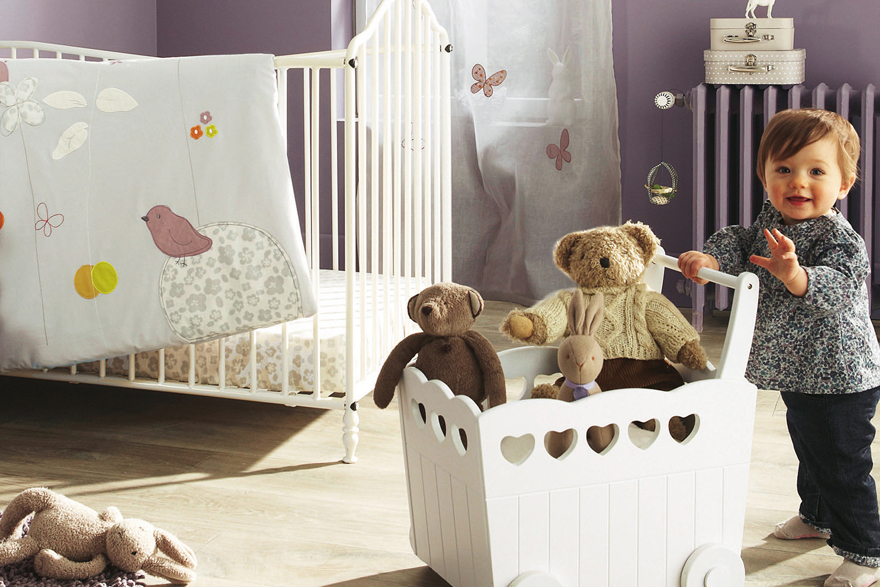How to Make Your Nursery Safe and Healthy for Years to Come
When we think of toxic environments, we don’t usually think of our own homes. However, just because we can’t see it doesn’t mean it’s not there. How healthy is the air you’re breathing?
Healthy indoor air quality is vital to creating a healthy home. Many things we bring into our home can contribute to lower indoor air quality. By being mindful of the products you use in your nursery, bedroom or playroom, you can make the safest choices for your child and family.
What are VOCs?
According to the Environmental Protection Agency (EPA), volatile organic compounds (VOCs) “are emitted as gases from certain solids or liquids. VOCs include a variety of chemicals, some of which may have short and long-term adverse health effects.”
Additionally, in its “Healthy Home Manual”, the Centers for Disease Control (CDC) states that “levels of approximately a dozen common VOCs can be two to five times higher inside the home, as opposed to outside, whether in highly industrialized areas or rural areas.”
While many of us immediately think of noxious fumes from strong chemicals, VOCs are present in thousands of items, including:
- Carpet and other flooring material
- Draperies
- Bedding
- Paint
- Bleach
- Health and beauty products
- Household cleaning products
- Home construction supplies
- Furniture
While sensitivity varies, exposure to high levels of VOCs could be a cause of some health disturbances. According to the CDC’s National Institute for Occupational Safety and Health (NIOSH), these VOCs can cause noticeable health issues, including: (2)
- Eye, nose or throat irritation
- Skin irritation
- Headache
- Nausea
- Dizziness
- Fatigue
VOC exposure risk continues to be explored and debated in research communities. A particular area of concern includes products containing formaldehyde. According to a report titled “Toxic Baby Furniture: The Latest Case for Making Products Safe From the Start” by the group Environment California Research and Policy Center, some products available in the consumer market may present health risks.
“When used in the home, formaldehyde- containing products can release the chemical into indoor air. In particular, products made from composite wood containing urea-formaldehyde glue tend to create indoor air pollution. Children chronically exposed to elevated levels of airborne formaldehyde face an increased risk of developing allergic sensitivities and/or asthma. Moreover, the State of California and the International Agency for Research on Cancer classify formaldehyde as a known human carcinogen.”
What Can You Do to Build a Healthier Home?
Thousands of products have the potential to emit VOCs, including many of the most common things found in every home. Considering this, how can you build a safer environment for your children? You can’t possibly eliminate every threat of VOC, but you can take steps to reduce the exposure of VOCs to your family. Here are a few things to keep in mind:
- Avoid or limit using items with high-levels of VOCs in your home.
- Use items that have already “off-gassed”, the process of giving off the highest levels of irritating fumes and gases associated with VOCs.
- Purchase low-VOC paints and low-formaldehyde products when available.

